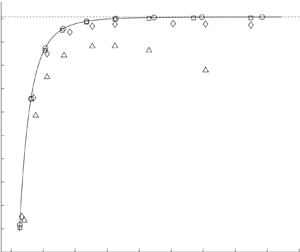Published online by Cambridge University Press: 19 April 2023

A theoretical study is made of the stability of propagating internal gravity wave modes along a horizontal stratified fluid layer bounded by rigid walls. The analysis is based on the Floquet eigenvalue problem for infinitesimal perturbations to a wave mode of small amplitude. The appropriate instability mechanism hinges on how the perturbation spatial scale relative to the basic-state wavelength, controlled by a parameter  $\mu$, compares to the basic-state amplitude parameter,
$\mu$, compares to the basic-state amplitude parameter,  $\epsilon \ll 1$. For
$\epsilon \ll 1$. For  $\mu ={O}(1)$, the onset of instability arises due to perturbations that form resonant triads with the underlying wave mode. For short-scale perturbations such that
$\mu ={O}(1)$, the onset of instability arises due to perturbations that form resonant triads with the underlying wave mode. For short-scale perturbations such that  $\mu \ll 1$ but
$\mu \ll 1$ but  $\alpha =\mu /\epsilon \gg 1$, this triad resonance instability reduces to the familiar parametric subharmonic instability (PSI), where triads comprise fine-scale perturbations with half the basic-wave frequency. However, as
$\alpha =\mu /\epsilon \gg 1$, this triad resonance instability reduces to the familiar parametric subharmonic instability (PSI), where triads comprise fine-scale perturbations with half the basic-wave frequency. However, as  $\mu$ is further decreased holding
$\mu$ is further decreased holding  $\epsilon$ fixed, higher-frequency perturbations than these two subharmonics come into play, and when
$\epsilon$ fixed, higher-frequency perturbations than these two subharmonics come into play, and when  $\alpha ={O}(1)$ Floquet modes feature broadband spectrum. This broadening phenomenon is a manifestation of the advection of small-scale perturbations by the basic-wave velocity field. By working with a set of ‘streamline coordinates’ in the frame of the basic wave, this advection can be ‘factored out’. Importantly, when
$\alpha ={O}(1)$ Floquet modes feature broadband spectrum. This broadening phenomenon is a manifestation of the advection of small-scale perturbations by the basic-wave velocity field. By working with a set of ‘streamline coordinates’ in the frame of the basic wave, this advection can be ‘factored out’. Importantly, when  $\alpha ={O}(1)$ PSI is replaced by a novel, multi-mode resonance mechanism which has a stabilising effect that provides an inviscid short-scale cut-off to PSI. The theoretical predictions are supported by numerical results from solving the Floquet eigenvalue problem for a mode-1 basic state.
$\alpha ={O}(1)$ PSI is replaced by a novel, multi-mode resonance mechanism which has a stabilising effect that provides an inviscid short-scale cut-off to PSI. The theoretical predictions are supported by numerical results from solving the Floquet eigenvalue problem for a mode-1 basic state.